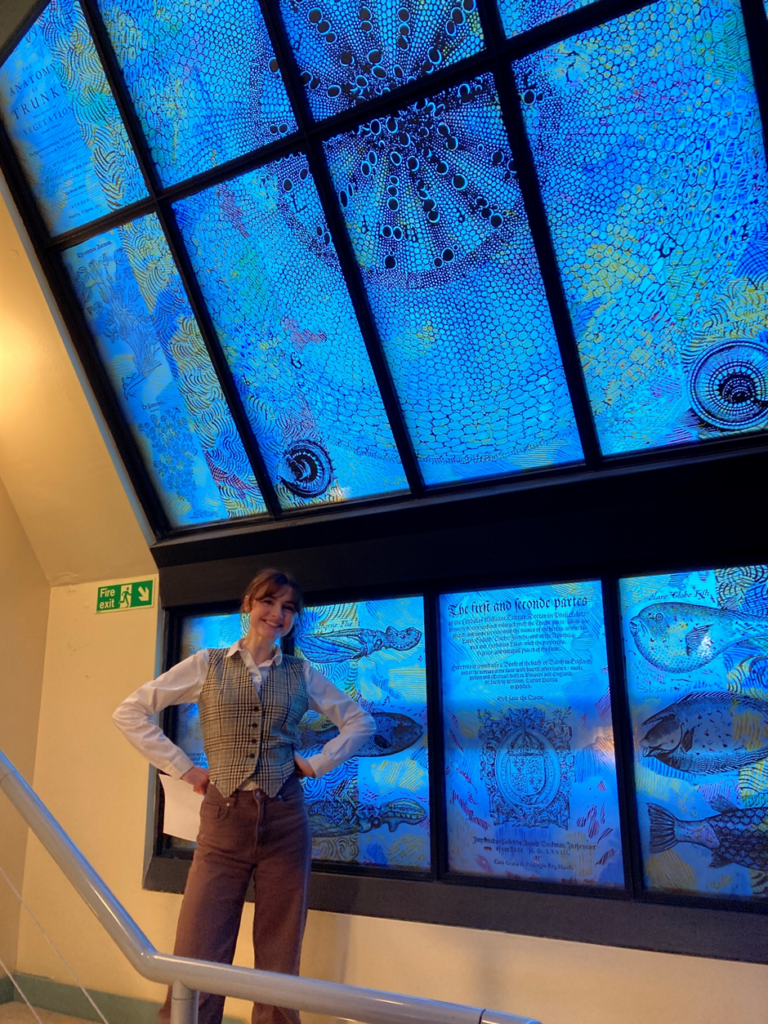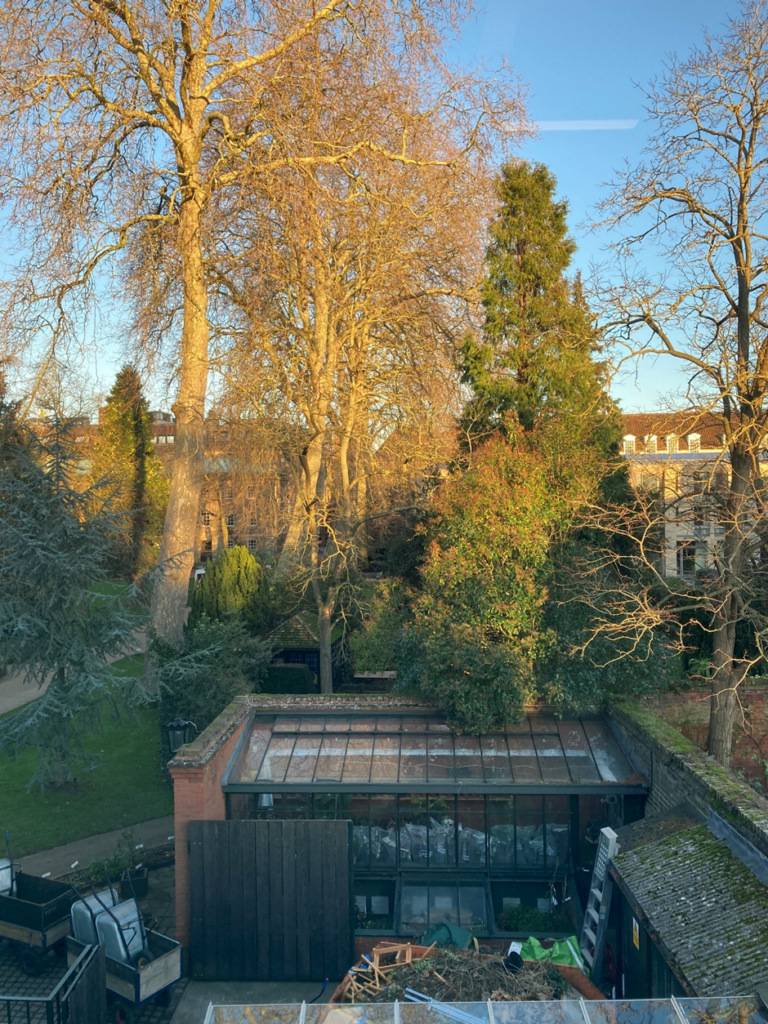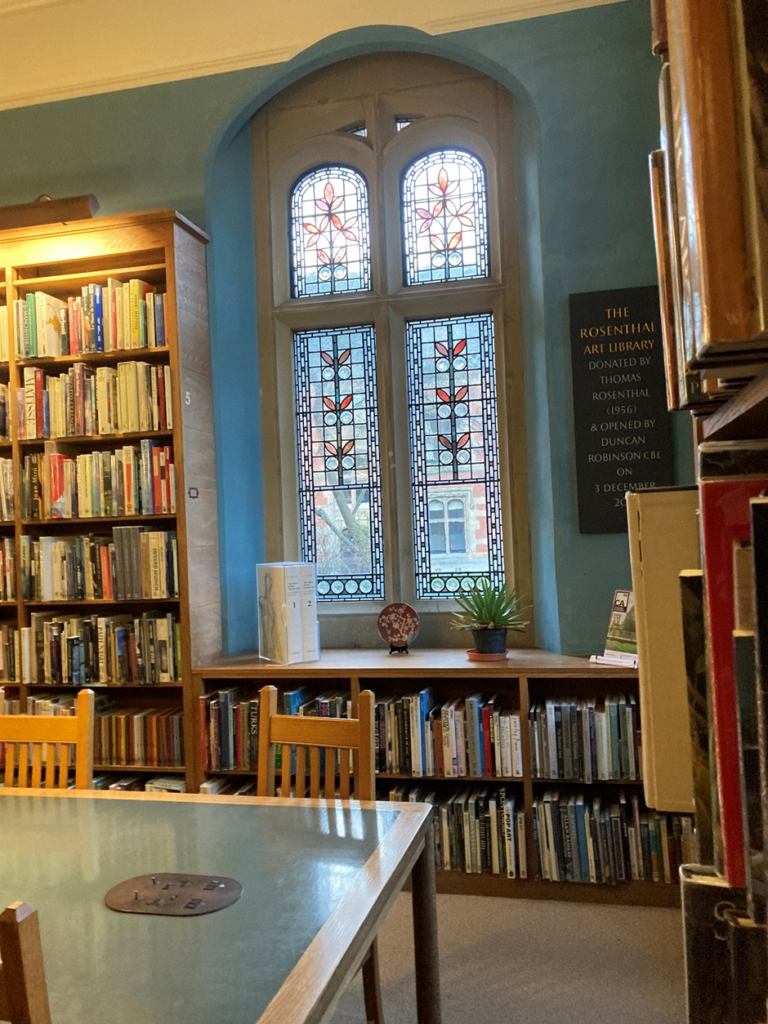Earlier this month, the trainees gathered once again for a visit to Pembroke College. We assembled in the law library, a lovely space which was beautifully ordered and organised (very apt for a law library!). There, the Deputy Librarian gave us an illuminating talk on law librarianship and how it differs to other kinds of library work, like public and academic. Being a law librarian is a much more specialised role than any of us realised; it requires intimate knowledge of the field in order to help barristers find case reports and any other material they may need, often at very short notice.

Source: The Honourable Society of Lincoln’s Inn (lincolnsinn.org.uk)
It is this rich and fast-paced environment which makes law librarianship so unique. We were told that the Inns of Court in London each have libraries which are based on Oxbridge colleges! The Inns of Court offer library traineeships too (like Lincoln’s Inn, where the Deputy Librarian of Pembroke did their traineeship) which are well worth looking into. When they are advertised, they will be listed here, along with any other UK traineeships!
The Deputy Librarian explained how the courts are structured in the UK using this handy flowchart (see below); it was a stark reminder of how little I actually know about court structure, and just seeing this chart has helped me better understand the law books and serials I receive for the law library here at Trinity!

Source: Courts & Tribunals website
Other kinds of law libraries can include commercial law firm libraries, which can be high-pressure and fast-paced, as well as academic law libraries, like the Squire Library here in Cambridge, or smaller college law libraries, which usually form one branch of the main library. Lots of law reports and other material can be found online through databases or sites like Westlaw, but many law libraries prioritise retaining physical copies where possible, because this makes referencing and browsing cases easier, though there are benefits to both! Online case reports can be edited and updated and sometimes provide more information or links for cross-referencing. I am trying to give both the physical and online resources a good presence for our law students at Trinity by advertising the latter more visibly in the library.
The Deputy Librarian told us about an association called BIALL, the British and Irish Association of Law Librarians. It’s like CILIP, specifically for law librarians! Here, you can find a host of information about law librarianship, how to get into it, job vacancies, and various conferences and events being held. It was eye-opening to see how far-reaching and how absolutely vital librarianship is in a variety of fields, and the role it plays in upholding justice in our legal system. It really is about more than just books!
After a thoroughly enjoyable cross-examination about law libraries, we accompanied the Pembroke trainee on a tour around the rest of Pembroke’s glorious library. It is a modernised Victorian library, originally designed by Alfred Waterhouse in 1877-78. We were stunned to see that the centrepiece of the library foyer is Waterhouse’s original desk, which used to belong to the librarian when their office was located in the upper reading room. It now houses the librarians’ book of the week display and the pen-recycling box!

Outside Pembroke Library as the sun sets.
You can really pick out the layers of history in the building; the Waterhouse desk is only the beginning. The stationery cupboard next to the foyer has transparent flooring so you can see through to the original tiles; we all thought this was very cool (if a little vertiginous)! And when the building was extended, developers left the outer wall of the building in its original state, now forming the inner wall of the modern extension. The gorgeous floral stained-glass windows made me feel like I’d stepped straight into a classic Disney movie, and the iconic modern stained-glass window, designed by Hans von Stockhausen, continues the botanical theme beautifully!

The Hans Von Stockhausen botanical window (Pembroke trainee for scale…)
The window was originally commissioned because, when Pembroke purchased the land on which the library now stands from Peterhouse, it was on the agreement that nothing was built that would overlook the Peterhouse Master’s Lodge and garden. The window itself admits light but does not allow you to see through to Peterhouse—and who would want to when the window alone is so gorgeous? Van Stockhausen based the design on the works of two eminent Pembroke botanists, Nehemiah Grew (1641-1712) and William Turner (1508-1568). You can find some of the woodcuts and text from their early print books layered with mellow splashes of colour to create a bibliographic spectacle! Not your average staircase window…

Details from the Hans Von Stockhausen window.
At the top of the stairs, we came to the Yamada Room, another gorgeous space with panoramic views of Pembroke—bliss! Yamada was the founder of the Nihon University in Tokyo, and is commemorated here due to his generous contribution to the building of the library extension. This room is a veritable shrine to Ted Hughes and features another window designed by Hans van Stockhausen, this one featuring Ted Hughes’ poems and imagery, and an unsettling bloody handprint—but alas, I cannot show it due to copyright (scroll up and look at the other one again instead!) Hughes’s desk, chair and many of his books are housed here. I loved hearing about how experts have tried to determine whether Hughes was left- or right-handed based on the ink stains on his desk.

View from the Yamada Room.
The Upper Reading Room is part of the original Victorian building and is a stunning panoply of dark wood beams and stacks upon stacks of lovely books. The bay window is where the Waterhouse desk would have originally sat, in what was the librarian’s office, but the entire room is now a dedicated space for books and students. There are plenty of nods to Ted Hughes up here too, including a bust with an exacting stare, and a display case full of Hughesian treasures!

Victorian window and Ted Hughes themed display case in the upper reading room.
After a wander down some spiral stairs, we found ourselves at the Rosenthal Art Library. Also housed in the Victorian part of the building, half of the books kept here comprise a single donation from Tom Rosenthal. Readers come from far and wide to consult the art books here and, as such, the staff treat them as a special collection. It forms the largest art history collection in all of Cambridge (besides the Art History faculty library, of course)!

The Rosenthal Art Library.
It’s clear that Pembroke Library really is one-of-a-kind, from the tip of the beautiful clock tower to the Victorian tiles beneath the floor!
We want to thank Grace and her wonderful colleagues at Pembroke for having us to visit!
